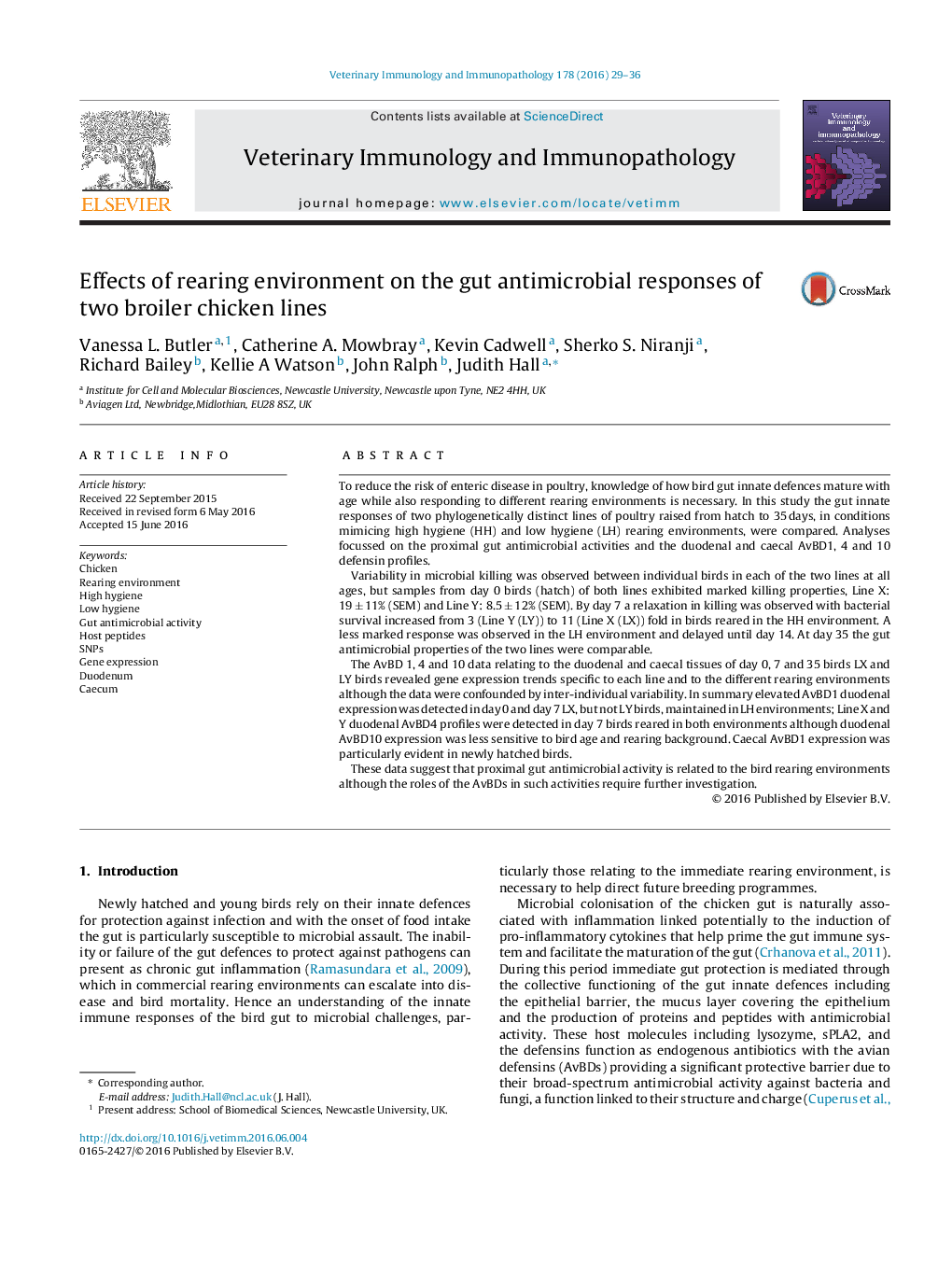| کد مقاله | کد نشریه | سال انتشار | مقاله انگلیسی | نسخه تمام متن |
|---|---|---|---|---|
| 2461291 | 1555006 | 2016 | 8 صفحه PDF | دانلود رایگان |
• Rearing conditions and gut innate defences of genetically distinct birds studied.
• Hatch linked to maximal proximal gut antimicrobial activity.
• High hygiene environment linked to early relaxation of gut antimicrobial defences.
• Impact of rearing environment on specific gut defences unique to specific bird line.
To reduce the risk of enteric disease in poultry, knowledge of how bird gut innate defences mature with age while also responding to different rearing environments is necessary. In this study the gut innate responses of two phylogenetically distinct lines of poultry raised from hatch to 35 days, in conditions mimicing high hygiene (HH) and low hygiene (LH) rearing environments, were compared. Analyses focussed on the proximal gut antimicrobial activities and the duodenal and caecal AvBD1, 4 and 10 defensin profiles.Variability in microbial killing was observed between individual birds in each of the two lines at all ages, but samples from day 0 birds (hatch) of both lines exhibited marked killing properties, Line X: 19 ± 11% (SEM) and Line Y: 8.5 ± 12% (SEM). By day 7 a relaxation in killing was observed with bacterial survival increased from 3 (Line Y (LY)) to 11 (Line X (LX)) fold in birds reared in the HH environment. A less marked response was observed in the LH environment and delayed until day 14. At day 35 the gut antimicrobial properties of the two lines were comparable.The AvBD 1, 4 and 10 data relating to the duodenal and caecal tissues of day 0, 7 and 35 birds LX and LY birds revealed gene expression trends specific to each line and to the different rearing environments although the data were confounded by inter-individual variability. In summary elevated AvBD1 duodenal expression was detected in day 0 and day 7 LX, but not LY birds, maintained in LH environments; Line X and Y duodenal AvBD4 profiles were detected in day 7 birds reared in both environments although duodenal AvBD10 expression was less sensitive to bird age and rearing background. Caecal AvBD1 expression was particularly evident in newly hatched birds.These data suggest that proximal gut antimicrobial activity is related to the bird rearing environments although the roles of the AvBDs in such activities require further investigation.
Journal: Veterinary Immunology and Immunopathology - Volume 178, 1 October 2016, Pages 29–36
